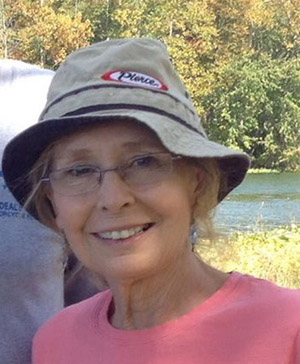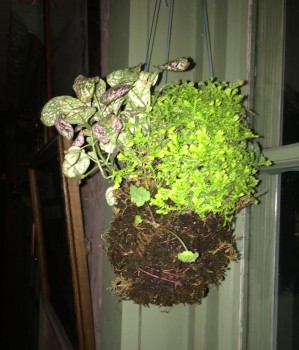By JOYCE ARLEEN CORSON
Master Gardener
 SYRACUSE — The spirit of the winter season to me is my indoor garden. Short days are enhanced with indoor space created by a professional design or an off season project built from reusable materials. It can be used this time of year to care for tropical plants or a germination station.
SYRACUSE — The spirit of the winter season to me is my indoor garden. Short days are enhanced with indoor space created by a professional design or an off season project built from reusable materials. It can be used this time of year to care for tropical plants or a germination station.
Starting seeds is much the same as caring for an infant, beginning with the needed environment for the seed to germinate. The waiting time begins often depending on the kind of seed. I have had great success using hosta seed and also with the help of Facebook groups. I’m never alone for advice and success stories. Time needed for development is based on the objectives of your program. I want my hosta plants developed and ready to plant outside by May 15, in frost free atmosphere.
Ready made germination stations are available, with directions, at most retail stores that have gardening centers or on line. To create your own mini climate, start with sterile seed starting mix combining equal parts soil and water, placed into containers with drain holes, allowing complete absorption of water. Second plant seeds to a depth of seed size and cover containers securely with plastic wrap. You will not need to remove the plastic wrap until the seedlings have grown second leaves. Peeking in is OK, carbon dioxide from your breath is necessary for growth of plants, never let the seedlings become dry.
Keep bottom temperature at 75 degrees. Heating pads in germination stations are regulated for the correct temperature or you can create your own by using a warm window sill. Waiting patiently for the evidence of new growth is the hardest part of this project. Learning in master gardener’s class that only one seed in three will germinate is definitely a reality.
Just for review, some plant dos and don’ts for the indoor garden.
- Do water your plants thoroughly, until you see the water come out the drainage holes.
- Do not let your plants stand in water.
- Do check your plants for insects each time you water.
- Do fertilize your plants every three weeks, March thru October, Do not place any plant near radiator, heat-vents/AC ducts, or directly onto floors with radiant heat.
- Do not leave indoor plants outside or by open windows in temperatures below 55 degrees.
Surprise yourself with a new plant, a floating kokedama, a variation of bonsai, that started in Japan. It is the art of plant arrangement in a moss ball.
Considering the time year you may want to connect to a master gardener class itinerary.
Many counties are host to the class offered from Purdue University, our land grant college, decreed by Abraham Lincoln during his last days in office, guaranteeing agriculture advantages to all. Elkhart County daytime classes begin in January and Kosciusko evening classes begin in August. Check with your county extension office to make sure schedules haven’t changed.
Corson is a graduate of Adams Central High School, Manchester University and Ball State University. She and her husband, Ron, were married and enjoyed many years of traveling before they settled at Lake Papakeechie to raise their family. Soon after moving to the Syracuse area, Corson joined the Syracuse/Wawasee Garden Club and then became a Kosciusko County Master Gardener in 2002, the same year she retired from teaching.
“Early on my interest in gardening came from a lineage of farmers and their wives, including three generations of generosity, giving me an enormous collection of heritage trees, shrubs and flowers. History and traveling has given me special interest in native flowers, hosta, the art of bonsai and many plants that have been naturalized.”
Individuals who wish to contact Corson for further information or questions may email her at [email protected].


